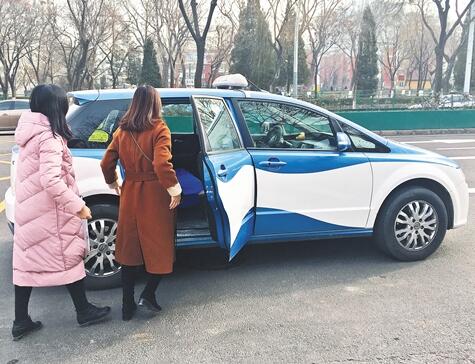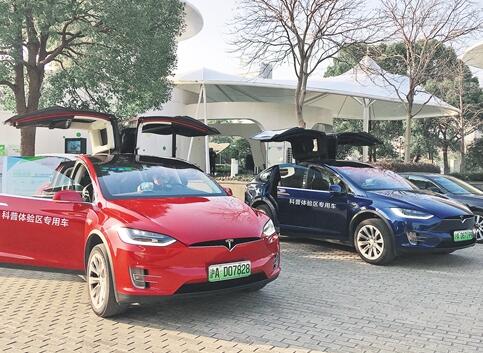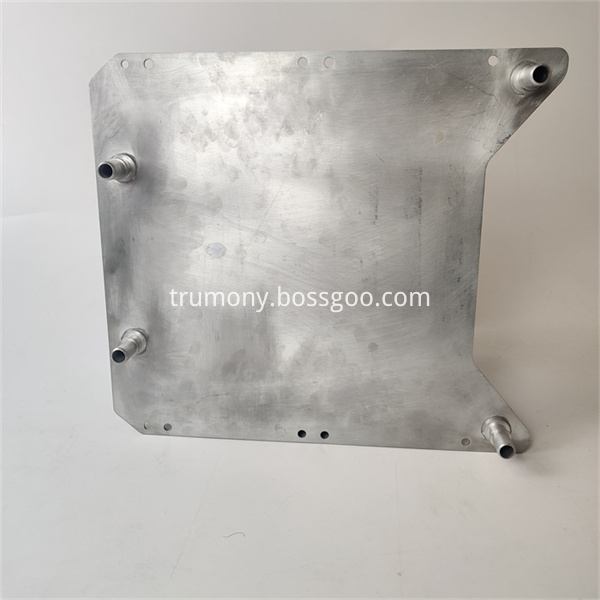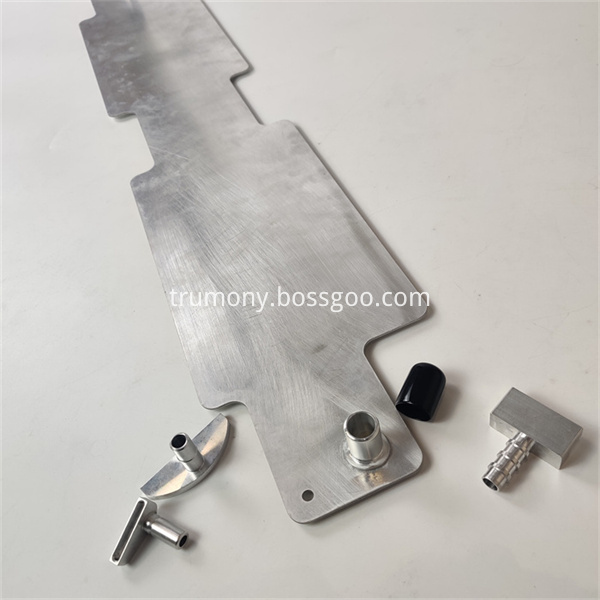A BYD E6 electric vehicle is driving off the production line from the Shenzhen assembly plant Taiyuan citizens in Shanxi take an electric taxi on the street Shanghai Anting International Motor City provides consumers with a variety of electric cars including Tesla for a test drive experience. Core tips In recent years, with the increase in the promotion of new energy vehicles and rapid industrial development, more and more consumers have begun to accept and purchase new energy vehicles. However, there are still many doubts about the development of new energy vehicles, especially pure electric vehicles. Whether the electric car is environmentally friendly or not, what is the prospect of industrial development, whether it is “rubbish†as individual voices say? A few days ago, the reporter went to Shenzhen, Shanghai and Taiyuan with relevant persons from the Ministry of Industry and Information Technology to conduct research on these cities that have developed rapidly in new energy vehicles and interviewed relevant experts. At regular intervals, there will be articles on the Internet that question new energy vehicles. The main point of view is that the source of power for electric vehicles is mainly from coal-fired electricity. The production and recycling process of batteries is not environmentally friendly; compared with traditional fuel vehicles, electric vehicles are Low level of technology; cost performance is not high. If so? Calculate energy savings accounts first Compared with traditional automobiles, electric vehicles can still achieve certain carbon emission reduction effects under the current high-carbon power structure in China. Even with the future implementation of the Sixth National Emission Standard (0.665 grams per kilometer), the electric vehicle emissions in 2015 will be only 53% of that of gasoline vehicles. Shenzhen is the first stop for research. “In recent years, Shenzhen’s urban air quality has rapidly increased, ranking among the top 10 cities with 74 relatively good air quality. 'Shenzhen Blue' has become a beautiful green development card for the city.†Shenzhen Municipal Human Settlements Environment Committee, Shenzhen City Liu Chang, supervisory office of EMU, said that this achievement is inseparable from the city’s vigorous promotion of new energy vehicles. It is understood that as of the end of 2016, Shenzhen had a total of 3.2 million vehicles. According to the analysis of air pollution sources by the Shenzhen Municipal Human Settlements Environment Committee, about 41% of the pollutants come from vehicle exhaust emissions. In order to raise the quality of atmospheric environment to the international advanced level, Shenzhen City has stepped up the promotion of new energy vehicles while strengthening the control of diesel vehicle exhaust pollution. “The buses operate for a long time and have a great connection with people's lives. The demonstration effect is good, and the charging piles are easy to configure and manage. In the promotion, we first selected this breakthrough.†According to Deputy Director of the Shenzhen Municipal Development and Reform Commission, Cai Yu, as of 2017 At the end of the year, Shenzhen City promoted 16,359 pure electric buses and became the first city in China to realize full electricization of public transport. Compared with traditional fuel vehicles, the energy saving effect brought by the pure electrification of public transport is obvious. “The average daily operating mileage of bicycles in Shenzhen is 174.4 kilometers, and the energy consumption per 100 kilometers is 106.38 kWh, which is 72.9% lower than that of conventional diesel buses.†Cai Yu said: After the pure electrification of Shenzhen buses, the total energy consumption of these vehicles is approximately 16.39 million tons of standard coal, the total replacement fuel is 415 million liters. In terms of emission reduction effects, Liu Chang provided a set of figures to reporters: CO2 emissions were 632,200 tons, including NOx, non-methane hydrocarbons, particulates, and other pollutants emission reductions were 187.44 tons, 239.51 tons, 4.69 tons. How are these numbers calculated? Liu Chang took CO2 emissions as an example to explain, mainly based on the “National Five†diesel vehicle emission standards, based on the CO2 emission rate of China Southern Power Grid, and according to the CO2 emissions of a 100 km-km bicycle in Shenzhen’s pure electric buses, 62.43 kg, a reduction in CO2 emission from diesel buses. 49.46 % is the parameter, integrated accounting. “The process of truly analyzing the effects of developing energy-saving and emission-reduction of electric vehicles is very complicated. Not only the upstream power generation and emissions should be counted, but also the later period of battery recycling should be counted and compared comprehensively.†Questioning that “electric vehicles are garbage†According to Wang Hewu, deputy secretary-general of the China Electric Vehicles Hundred People Association and a professor at Tsinghua University, the source of power sources is that pure electric vehicles will be less polluting than traditional fuel vehicles even if they all use thermal power. “This is mainly due to the transformation of thermal power generation in the country in recent years. Many small thermal power plants have been shut down. Since 2010, the cleanliness of domestic thermal power generation has increased dramatically, and the emission of pollutants has dropped by about 80% per kilowatt hour. The pollutant emissions generated by the electricity ranged from 1g to 1.2g.†The research team headed by Wang Hewu took the taxi with the highest power consumption in the winter in Beijing as a sample and conducted detailed calculations. The results showed that the electric power driven by thermal power The pollutant emission of vehicles is only equivalent to 30% of the pollutant emissions of gasoline vehicles under the “National Five†emission standard (1.16 grams per kilometer). “There are many influencing factors for carbon emissions from electric vehicles, including emission at the production stage, ratio of vehicle energy consumption, power grid carbon emission intensity, vehicle usage scenarios, power transmission efficiency, etc.†Zhao Fuquan, Dean of the Automotive Industry and Technology Strategy Institute of Tsinghua University, told reporters His team started from the whole life cycle and conducted a comprehensive comparative analysis of the carbon emissions of different EVs based on several core influencing factors. He believed that “electric vehicles are relative to traditional automobiles, even if they are currently high-carbon electricity in China. Under the structure, certain carbon emission reduction effects can still be achieved, which is mainly due to the fact that the low-emissions of electric vehicles during the use phase can largely compensate for the relatively high disadvantages of emissions during the production phase.†What is more worth looking forward to is that the pollution generated during the power generation process can be centrally treated and steadily improved. Moreover, as the pollutant emission of the power plant is improved and the energy density of the battery is increased, the emission reduction effect of the electric vehicle will become more and more obvious. “If the renewable energy of the power grid can reach 50% by 2025, then all types of invisible pollutants in the power grid will be significantly reduced.†Wang Hewu pointed out, “Using the future implementation of the Sixth National Emission Standard (0.665 g/km) To measure, electric vehicle emissions in 2015 were only 53% of gasoline vehicles." Recalculate the economic benefits In view of the cost-effectiveness of electric vehicles as compared to fuel vehicles, the key is to see how this account is calculated. The use of electric vehicles from an energy-saving point of view, using eight years as the operating period, eliminating some of the necessary expenses, each car can save 141,200 yuan, enough to offset the part of the original spending in the purchase of electric vehicles In Yingze Avenue in Taiyuan City, the reporter stopped a taxi. This is a BYD E6. "Open electric vehicles do save money compared to fuel vehicles." Kang Shaofeng, a driver of the Shanxi Baoli Taxi Company, rolled down the window and "approximately RMB 105 a day." He calculated an account for the reporter, Taiyuan Pingfeng electricity price was 0.53 yuan, plus charging service fee 0.45 yuan, the total charge price of 0.98 yuan, according to 100 kilometers power consumption of 25 kwh, operating 380 kilometers per day, daily operation The cost is about RMB 93; if it is a fuel vehicle, it will consume 8 liters per 100 kilometers, 6.24 yuan per liter of 92 petrol, and operate at the same mileage; the daily operating cost will be about 189 yuan; if it is a refuelling vehicle, it will cost about 100 kilometers. The energy consumption is 8 cubic meters, 4.10 yuan per cubic meter, and the same mileage calculation, the daily operating cost is about 124.64 yuan. Is it convenient to charge? "When I started taking over this car, I was also very worried." In response to a reporter's question, Kang Shaofeng said frankly that there are more and more Taiyuan charging piles, and there are many under the viaduct. "This car is fast charging, 11 am You can make up for 1 hour at night or in the evening. Although the charging process increases the waiting time, some stations are equipped with a rest room, so that you can eat meals and go online without affecting vehicle operations. Regarding the issue that the cost performance of electric vehicles is not as good as that of fuel vehicles, Wenxue Le, Director of the Industrial Policy Division of the Industry and Information Industry Committee of Taiyuan City, said that the key lies in how this account is calculated. He told reporters that according to the daily savings of energy costs 50 yuan, after deducting the monthly maintenance time of 1 day, the annual operating days of 353 days, the annual energy cost of each car to save 17,600 yuan. Calculating the use period of 8 years, each car can save 141,200 yuan. “The cost of this province is enough to offset the part that was originally spent on the purchase of electric vehicles.†Wen Xu Le added, not to mention, when the promotion of the application of new energy vehicles, BYD E6 manufacturers guide price 309,800 yuan, Taiyuan According to the national, provincial and municipal standards of 1:1:2, the city subsidizes 220,000 yuan, and the subsidized vehicle price is 89,800 yuan. "The drivers get the same price as the original Santana and Jetta fuel vehicles." “If we do not count national and local financial subsidies, the current price of pure electric vehicles in China is about 50% more expensive than that of traditional fuel vehicles, but by 2020 this difference is expected to shrink to 20%; from 2025 to 2030, it can be done at a comparable cost. "Dong Yang, executive vice president of the China Association of Automobile Manufacturers, pointed out that considering the current oil prices, electricity bills, charging facility construction costs and operating costs, the charging cost of electric vehicles is about 1/3 of the price of oil, but the convenience of charging is indeed higher than Not on the refueling. For ordinary users, they can be regarded as offsetting each other; for taxis and other operating vehicles, electric vehicles have obvious cost advantages. He believes that "with the continuous improvement of the convenience of charging, the cost advantages of ordinary users will be apparent by 2025." As for the problem of too few new energy vehicle models mentioned on the Internet, the facts are not broken. In the BYD office building exhibition hall, the reporter saw that BYD E5, E6, Qin, Tang, etc., were more than one face value and one was more than one configuration. Li Yunfei, deputy general manager of BYD Auto Sales, told reporters that in recent years, the company has launched a series of new energy models centering on consumer demand, and the prices are mostly between RMB 130,000 and RMB 300,000. At the Shanghai New Energy Vehicle Public Data Collection and Detection Research Center, real-time monitoring of large-screen display has 269 models of 61 companies operating, and the city's new energy vehicle ownership has reached 154,731. Three industry "dividends" account With the expansion of the scale of the promotion of new energy vehicles, key technologies related to new energy vehicles, as well as related industries such as auto parts and automobile services, have also been greatly promoted, forming a relatively complete industrial cluster. “Thanks to this bus pure electricization opportunity, we have achieved a transformation from a traditional bus service company to an intelligent bus group.†On the way to the Wan Guo Cheng Comprehensive Station by taking the Eastern Bus e bus, Shenzhen East Bus Company Deputy General Manager Jia Tao took the initiative to demonstrate to the reporter the company's newly created "e bus quality bus" service. The core of e bus quality public transit is "analysis of demand, custom routes, appointments for travel, one person, one ticket, ticket purchase at any time (a variety of ticket payment methods), safe, reliable, economical and comfortable, smart scheduling, quick and efficient station, intensive Sharing, energy saving and environmental protection." She said that citizens download mobile APPs via mobile phones and publish travel demand. Bus companies use the back-end data to achieve an exact match between demand and supply, and provide citizens with an accurate and targeted custom booking travel service. As of November 2017, e bus quality bus lines have opened 729 lines, using 700 pure electric vehicles, owners who attract more than 5300 private cars a day have abandoned self-driving cars and selected quality bus travels, with a total of 12,206,600 rides accumulated. The mileage of 4.9841 million kilometers has strongly promoted the construction of smart transportation and smart cities in Shenzhen. BYD Co., Ltd., the first company to seize new energy, has formed an annual production capacity of 100,000 new energy passenger vehicles and 15,000 new energy buses. Its E6 has successfully entered Europe and the United States market, pure electric bus K9 has been exported to the United States, the Netherlands, Brazil and other countries. In the field of power batteries, Bertrai, a subsidiary of China Baoan, has become the world's largest supplier of negative electrode materials for batteries. At present, Shenzhen enterprises have over 11,778 patents for new energy vehicles. Among the 25 new energy automobile special innovation projects established by the country, Shenzhen companies such as BYD Company, Wuzhoulong Company, Waterma Battery and BAK Battery accounted for 16%, ranking first in the country. Taiyuan City took the opportunity of replacing pure electric vehicles with taxis and introduced BYD to build a new energy automobile production base in Taiyuan. The project plans to invest a total of 4 billion yuan. It is expected that after the completion of the project, the annual production capacity of 5,000 pure electric buses, 5,000 pure electric vehicles, and 2,000 industrial and mining trucks can be completed. The annual production value exceeds 15 billion yuan, which is a powerful impetus. The transformation and upgrading of local industries. At the same time, the further expansion of the electricity market has promoted the clean use of coal in Shanxi and extended the coal-electricity industrial chain. "If a taxi operates 353 days a year, 380 kilometers a day, and 25 kwh of electricity for a hundred kilometers, the annual electricity consumption of a taxi is 33535 kwh, and 8292 taxis use 278 million kwh of electricity a year. Wen Xule said that in 2015 Taiyuan had a total installed capacity of 7.33 million kilowatts and a total generating capacity of 21.2 billion kilowatt-hours. "If all 2501 buses, 8292 taxis, and 22385 high-traffic common logistics vehicles owned by the city are replaced with Pure electric vehicles use 2,109 million kilowatt-hours of electricity annually, accounting for 9.95% of the city's total electricity generation in 2015." At the main entrance of the Shanghai Songjiang Happy Valley parking lot, Shanghai Fudian Science and Technology Star Photovoltaic Charging Station is even more exciting. As the world's largest and most advanced photovoltaic charging station, the new materials used at the same time have practical functions such as light energy conversion and storage, sound insulation, heat insulation, windproof, waterproof, moisture-proof, and bad weather, and can achieve 22% energy conversion rate. The daily generating capacity is 80 kWh to 125 kWh, which can satisfy more than 400 vehicles. The VR experience hall, starry sky cafe, starry sky theater, stars sing and other starry sky series themed leisure and entertainment services, opened up new ideas and realms for the construction of China's new energy vehicle charging stations.
Water Cooling Tube For EV are used aluminum micro channel tubes with multi-port small channels to realize heat exchange cooling . It is a high efficiency battery management system solution for cylindrical cells. The cooling tube can be manufactured to meet the customer`s requirement in alloy,size,wall thickness ,geometry and batteries configuration. The micro channel cooling tube is with very low thermal resistance.When required for specific applications, we can do additional coating protection and thermal surface treatment.
cooling plate for ev,cooling plate for Electric vehicle,cooling pipe for EV Trumony Aluminum Limited , https://www.szaluminumpipe.com


The data released by the China Association of Automobile Manufacturers on January 11 shows that in 2017, the production of new energy vehicles in China reached 794,000, an increase of 53.8% year-on-year, with sales of 777,000 units, an increase of 53.3% year-on-year. With the expansion of the scale of new energy vehicles, key technologies related to new energy vehicles, as well as related industries such as auto parts and auto services have also been greatly promoted. Cai Yu said that the output value of Shenzhen's new energy vehicles has exceeded 100 billion yuan. It not only owns a group of new energy auto companies that are in the leading position in the industry, but also forms a relatively complete industrial cluster. 


Investigation and Thoughts on the Current Situation of New Energy Vehicles' Promotion and Development
Core Tip: Every once in a while, there will be articles on the Internet that question new energy vehicles. The main point of view is that the source of power for electric vehicles is mainly from coal-fired electricity. The production and recycling process of batteries is not environmentally friendly; compared with traditional fuel vehicles. , Low level of electric vehicle technology; cost is not high. If so?